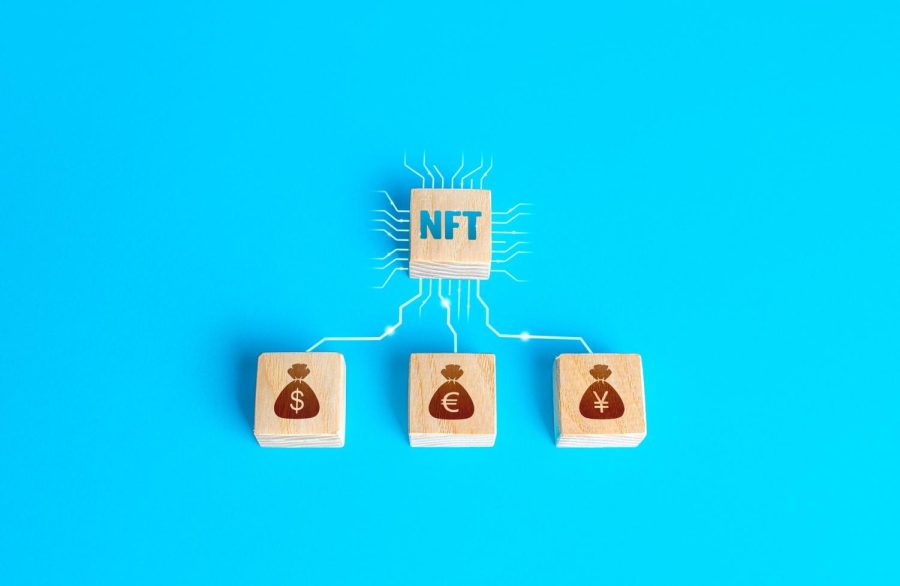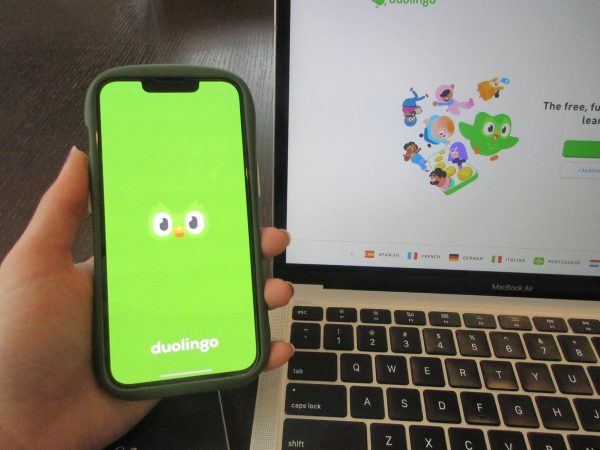Apes for Sale: The World of NFTs
January 25, 2022
Recently, a population of apes has overrun my Instagram feed.
They have come in a variety of fashions and styles: alien apes wearing rhinestone sunglasses, pirate apes donning Adidas-branded tracksuits, mutant apes oozing acid out of their fur. These are merely a few of the species that have popped up on posts, stories, and profile pictures. All of them look perpetually bored, with their eyes half-squinted as though in the middle of a yawn. Some apes bare their jagged teeth in a grimace, but most just choose to frown.
The Bored Ape Yacht Club is an online collection of 10,000 digital apes, all of whom possess their own distinctive characteristics and features. Cheap apes are auctioned for several hundred thousand dollars (USD), while expensive apes can cost over 1 million dollars. But in the online marketplace, the Yacht Club is only one of several hundred Non-fungible Token (NFT) collections for sale.
For some people, NFTs are the new virtual currency; for others, NFTs are merely “glorified baseball cards.” But for most, the world of NFTs is a mystery, clouded by obscure terms such as “blockchain” and “non-fungible.” But after internet research and interviews with crypto-trade veterans, it has become clearer why a few digitized apes can hold such exorbitant prices.
NFTs are purchasable digital codes that represent online collectibles, videos, artwork, and other items. Just as Leonardo da Vinci’s Mona Lisa cannot be traded for Pablo Picasso’s Guernica, an NFT cannot be exchanged for another NFT. Instead, buyers either sell their NFTs or take part in an auction system using the cryptocurrency Ether, in online marketplaces such as OpenSea or Rarible. So far in the year, Mike “Beeple” Winklemann’s Everydays: The First 5000 Days—an online collage of the artist’s daily works for over 5000 days—has sold for an Ether value of USD 69.3 million. Meanwhile, Cryptopunk #7523, the pixelated face of a masked, beanie-donning alien, sold for USD 11.75 million. Most individuals proudly display their NFTs on social media, a trend Bored Ape owners have adopted enthusiastically.
To prevent unauthorized, illegal transactions, NFTs operate on an Ethereum blockchain, a timeline of transactions conducted in a specific currency. Whenever there is an online transaction, records of the purchase are stored in a “data block” added to the end of the blockchain. Because blockchains are synced globally, across nodes (storage devices, such as a Mac or iPhone), illegal transactions can be caught easily through a cross-check system. Additionally, each “data block” has a complex security hash code, which requires immeasurable computational power to decrypt. Essentially, security is almost never a problem with NFTs.
At first glance, NFTs may seem like an easy route to quick money. But it has the problem of liquidation: NFTs are not actual cryptocurrencies, but online collectibles purchased with cryptocurrencies. Once the interest towards an NFT dwindles, potential buyers also disappear. With no way to sell their artwork, NFT owners are left with mere digital collectibles. It cannot be converted into Ether, and in turn, be liquefied into hard, usable cash.
There is justification in ridiculing NFTs as a simple trend. Aside from the risk of dropping in value, NFTs technically do not grant their buyers complete ownership over the collectible. On the internet, there is nothing to prevent web surfers from screenshotting an NFT purchased by somebody else. Ownership of an NFT is the equivalent of a “certificate of authenticity,” permitting the buyer to revel in the time, effort, and money spent acquiring the digital piece.
For many purchasers, NFTs are more a symbol of status, than valuable pieces of art. Once the speculative fervor dies down, there is a high risk that the value of these digital memorabilia will depreciate into nothing. For that reason, prominent investors have openly expressed doubts about the sustainability of NFT investment. Recent fluctuations in the market have led to dips of over 30% in the Ether value of certain NFTs, around several hundred thousand dollars in USD.
But one does not necessarily have to see the monetary value of an NFT in order to appreciate the beauty and craftsmanship of the piece. From virtual communal canvases to cyberpunk renditions of celebrities, the collection of NFTs is expansive and varied. Whether or not the high-risk, high-return nature of NFT investment is appealing, there is no question that a mutant ape is quite the spectacle.






















